
Fundamentals of Biomedical Engineering
.pdf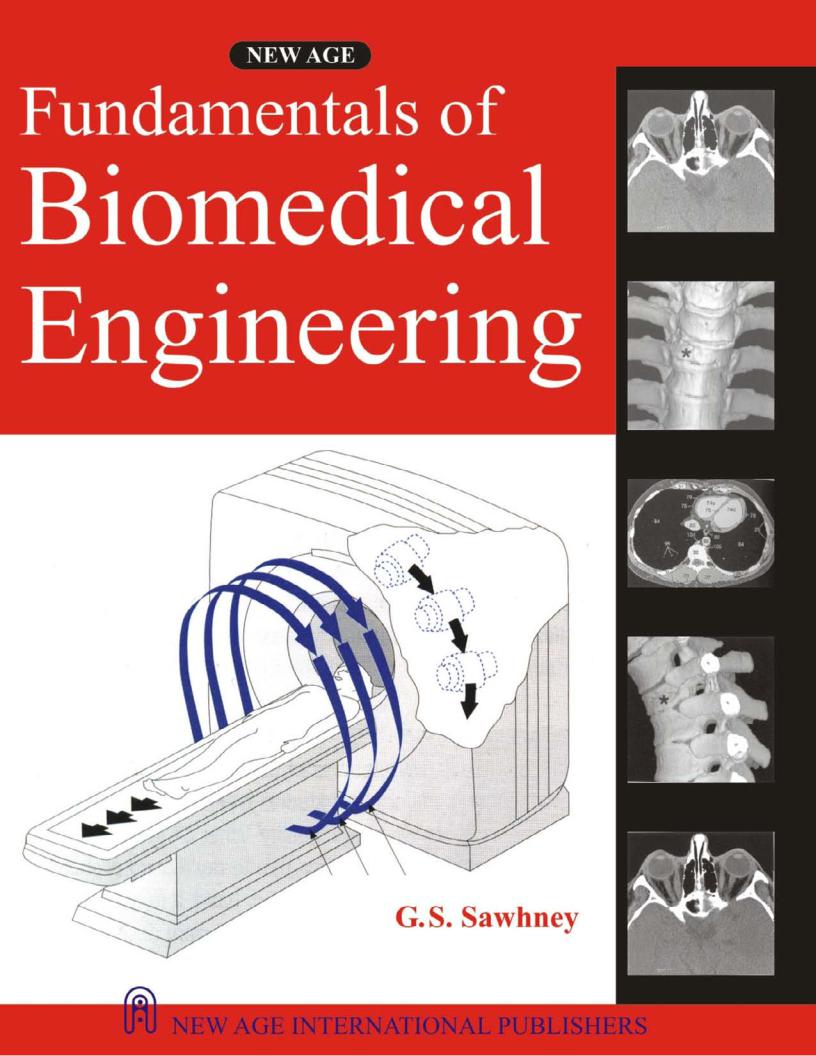
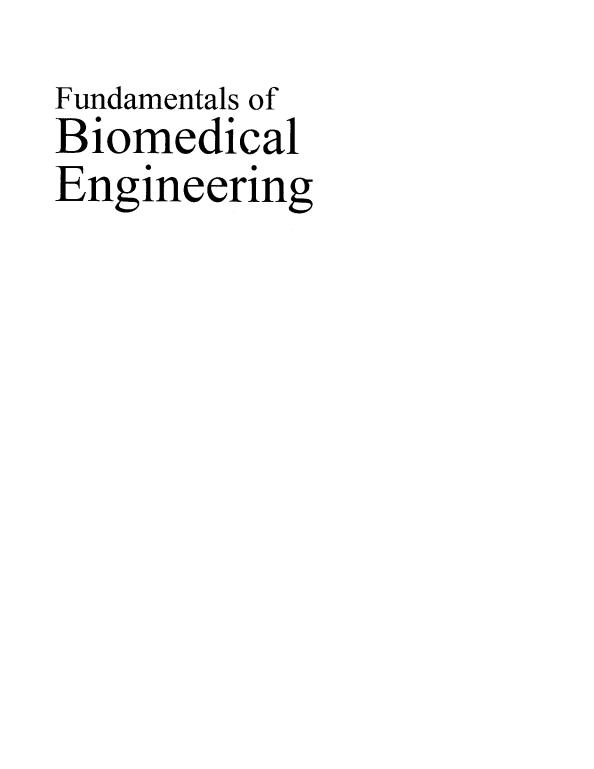
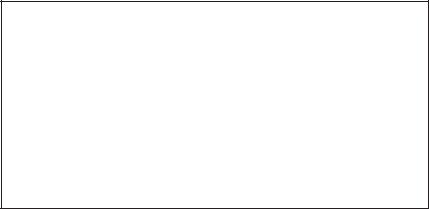
This page intentionally left blank
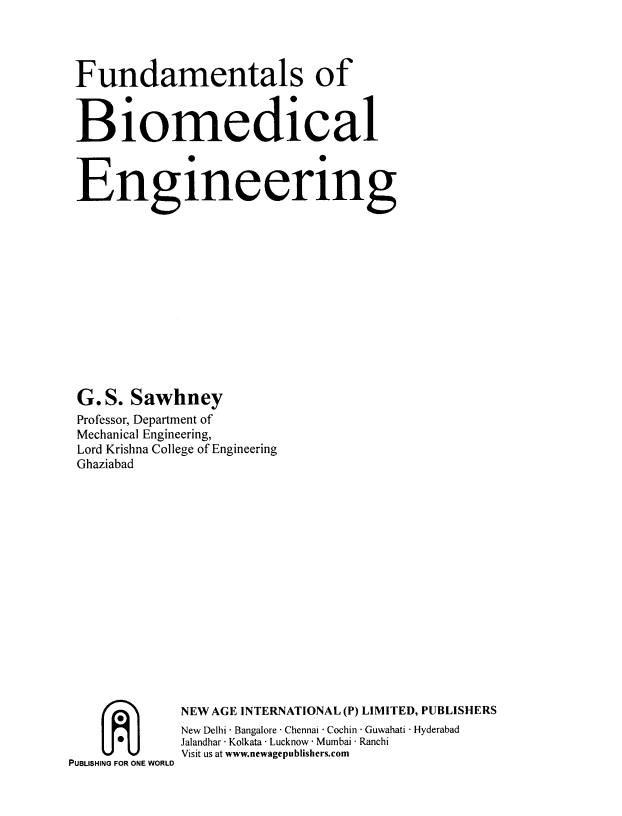

Copyright © 2007, New Age International (P) Ltd., Publishers Published by New Age International (P) Ltd., Publishers
All rights reserved.
No part of this ebook may be reproduced in any form, by photostat, microfilm, xerography, or any other means, or incorporated into any information retrieval system, electronic or mechanical, without the written permission of the publisher.
All inquiries should be emailed to rights@newagepublishers.com
ISBN (13) : 978-81-224-2549-9
PUBLISHING FOR ONE WORLD
NEWAGE INTERNATIONAL (P) LIMITED, PUBLISHERS
4835/24,Ansari Road, Daryaganj, New Delhi - 110002 Visit us at www.newagepublishers.com

PREFACE
‘Bio’ denotes all things which are connected with life. Firstly man has learnt the use of herbs for treatment and the knowledge of botany becomes essential for the practitioner of medicine. Gradually man has learnt to apply laws of physics and chemistry to living things which has led to the evolution of sciences of biophysics and biochemistry. In recent years, there has been rapid progress in the field of the health care. The need to effectively utilize high technology equipment and systems in the health care necessitates the expertise of clinical engineers, hospital physicians and computer scientists. Hardly any patient today would pass through a hospital or even a family physician’s chamber without the use of this technology.
The knowledge of basic engineering and the need of biomedical engineers in health care is increasingly accepted. The biomedical engineering is the inter marriage of engineering and medicine. The biomedical engineering as a subject has been introduced in the engineering courses to equip the engineering graduates to work in the health care industry. It is, therefore, essential for engineering students of almost all disciplines to have a sound knowledge of biomedical engineering. This book is designed to explain the fundamentals of biomedical engineering in the areas of biomechanics, biofluid flow, biomaterials, bioinstrumentations and in use of computing in biomedical engineering. Though this book is chiefly based on the syllabus of Uttar Pradesh Technical University, but an effort has been made to cover the syllabus of several other universities as well as based on my experience of teaching.
I have endeavoured to present a systematic explanation of the basic concepts of the biomedical engineering by firstly introducing the topics of anatomical terms and planes, terms related to movements medical terminology, histology and physiological systems of the body. A large number of objective type questions are included to enhance the understanding of the principles of theory.
I express my gratitude to Dr. Jasdev Singh Sawhney, FRCR and Dr. Pooja Sachdev Sawhney MRCP for their valuable suggestions which have helped me immensly in conceptualizing and writing this book. I am also thankful to my doctoral guide, Dr. S. Prasad, NIET Greater Noida for moral support. I am also thankful to Dr. Sujay K.Guha, SMS, IIT kharagpur who has been my inspiration in the field of biomedical engineering.
I am also thankful to Dr. V.K. Goswami and the faculty of GNIT, Greater Noida specially Mr. Devraj Tiwari of Mechanical, Prof O.P. Sharma and Mr. Manish of Information Technology, Mrs. Minakshi Awasthi of Physics and Mr. S.D. Nautyal of library for their contributions.
Above all, I wish to record my sincere thanks to my wife, Jasbeer Kaur for her patience shown throughout the preparation of this book. I am also thankful to the staff of New Age Publishers
who have associated with the completion of this book. Last but not least, I want to thank Mr. K.K. Aggarwal, chairman and Dr. A.M. Chandra, Director of Lord Krishna College of Engineering, Ghaziabad where I joined recently for their constant encouragement.
I would appreciate receiving constructive suggestions and objective criticism from students and teachers alike with a view to further enhancing the usefulness of the book by e-mailing at channi_sawhney@hotmail.com
G.S. SAWHNEY

CONTENTS
|
Preface |
v |
1. |
Introduction |
1 |
2. |
Concepts of Physics, Mechanics and Fluid Mechanics |
23 |
3. |
Biomedical Engineering |
33 |
4. |
Biomechanics of Bone |
38 |
5. |
Biomechanics of Soft Tissues |
48 |
6. |
Skeletal Joints |
52 |
7. |
Mechanics of the Spinal Column |
57 |
8. |
Mechanics of Upper Limbs |
62 |
9. |
Mechanics of Lower Limbs |
74 |
10. |
The Cardiovascular System and Blood Flow |
89 |
11. |
The Respiratory System |
111 |
12. |
Kidney and Blood Flow |
122 |
13. |
Prosthesis and Therapeutic Devices |
127 |
14. |
Orthosis |
141 |
15. |
Metallic Biomaterials |
146 |
16. |
Polymeric Biomaterials |
151 |
17. |
Bioceramics |
158 |
18. |
Composite Biomaterials |
162 |
19. |
Biogradable Polymeric Biomaterials |
165 |
20. |
Orthopedic Prostheses Fixation |
167 |
21. |
Physiological Signals and Transducers |
169 |
22. |
Signal Processing |
181 |
23. |
Digital Image Acquisition and Processing |
186 |
24. |
Radiography |
194 |
25. |
Computed Tomography |
204 |
26. |
Magnetic Resonance Imaging |
213 |
27. |
Ultrasound Imaging |
219 |
28. |
Radioisotopes and Radiotherapy |
226 |
|
viii |
|
29. |
Nuclear Medicine |
232 |
30. |
Health Care Information and Communication |
235 |
31. |
Biotelemetry |
239 |
32. |
Application of Computer in Medicine |
244 |
33. |
Telemedicine |
249 |
34. |
Database Design Topologies and Network Security |
255 |
|
Bibliography |
260 |
|
Index |
262 |
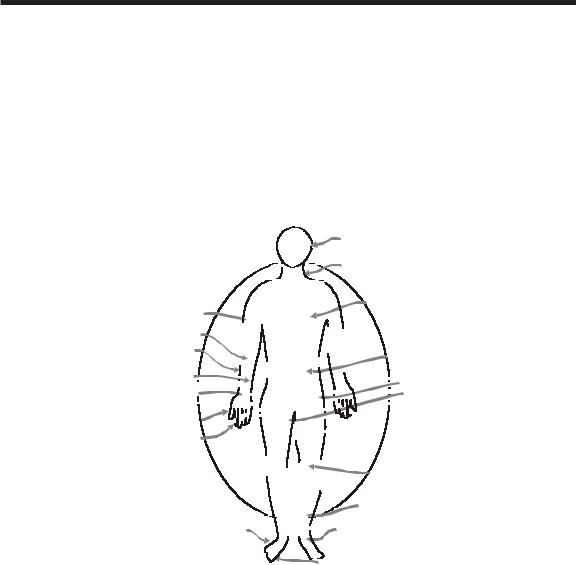
INTRODUCTION
If only tool in your bag is a hammer then every problem in the world appears to be a nail.
ANATOMICAL TERMS AND PLANES
1.The body is made up of the head, trunk and limbs. The trunk consists of the neck, thorax (chest) and abdomen (belly). The lower part of the abdomen is the pelvis. This word is
also used for the bones of the pelvis. The lowest part of the pelvis or in other words the lowest part of the trunk is the perineum. The central axis of the trunk is the vertebral column, and the upper part of it (cervical part) supports the head.
|
|
|
|
|
|
|
|
|
|
|
|
|
|
|
|
|
|
|
|
|
|
|
|
|
|
|
|
|
|
|
|
|
|
Head |
|||
|
|
|
|
|
|
|
|
|
|
|
|
|
|
|
|
|
|
|
|
|
|
|
|
|
|
|
|
||||||||||
|
|
|
|
|
|
|
|
|
|
|
|
|
|
|
|
|
|
|
|
|
|
|
|
|
|
|
|
|
|
|
|
|
|
Neck |
|||
|
|
|
|
|
|
|
|
|
|
|
|
|
|
|
|
|
|
|
|
|
|
|
|
|
|
|
|
|
|
|
|
|
|
|
|
Thorax |
|
|
|
|
|
|
|
|
|
|
|
|
|
|
|
|
|
|
|
|
|
|
|
|
|
|
|
|
|
|
|
|
|
|
|
|
|
||
Arm |
|
|
|
|
|
|
|
|
|
|
|
|
|
|
|
|
|
||||||||||||||||||||
Fore Arm |
|
|
|
|
|
|
|
|
|
|
|
|
|
|
|
|
|
|
|
|
|
|
|
|
|
|
|
|
|
||||||||
|
|
|
|
|
|
|
|
|
|
|
|
|
|
|
|
|
|
|
|
|
|
|
|
|
|
|
|
|
|||||||||
|
|
|
|
|
|
|
|
|
|
|
|
|
|
|
|
|
|
||||||||||||||||||||
|
|
|
|
|
|
|
|
|
|
|
|
|
|
|
|
|
|
|
|
|
|
|
|
|
|
|
|
|
|
|
|
|
|||||
Radial side |
|
|
|
|
|
|
|
|
|
|
|
|
|
|
|
|
|
|
|
|
|
|
|
|
|
|
|
|
Abdomen |
||||||||
Ulnar side |
|
|
|
|
|
|
|
|
|
|
|
|
|
|
|
|
|
|
|
|
|
|
|
|
|
|
|
|
|
|
|
|
|
|
|
|
|
|
|
|
|
|
|
|
|
|
|
|
|
|
|
|
|
|
|
|
|
|
|
|
|
|
|
|
|
|
|
|
|
|
|
|
|
Pelvis |
|
|
|
|
|
|
|
|
|
|
|
|
|
|
|
|
|
|
|
|
|
|
|
|
|
|
|
|
|
|
|
|
|
|
|
|
|
||
|
|
|
|
|
|
|
|
|
|
|
|
|
|
|
|
|
|
|
|
|
|
|
|
|
|
|
|
|
|
|
|
|
|
|
|
||
Hand |
|
|
|
|
|
|
|
|
|
|
|
|
|
|
|
|
|
|
|
|
|
|
|
|
|
|
|
|
|
|
|
|
|
|
|
|
Perineum |
|
|
|
|
|
|
|
|
|
|
|
|
|
|
|
|
|
|
|
|
|
|
|
|
|
|
|
|
|
|
|
|
|
|
|
|
|
|
Dorsal surface |
|
|
|
|
|
|
|
|
|
|
|
|
|
|
|
|
|
|
|
|
|
|
|
|
|
|
|
|
|
|
|
|
|
|
|
||
|
|
|
|
|
|
|
|
|
|
|
|
|
|
|
|
|
|
|
|
|
|
|
|
|
|
|
|
|
|
|
|
|
|
||||
Palmar surface |
|
|
|
|
|
|
|
|
|
|
|
|
|
|
|
Thigh |
|||||||||||||||||||||
|
|
|
|
|
|
|
|
|
|
|
|
|
|
|
|||||||||||||||||||||||
|
|
|
|
|
|
|
|
|
|
|
|
|
|
|
|||||||||||||||||||||||
|
|
|
|
|
|
|
|
|
|
|
|
|
|
|
|||||||||||||||||||||||
|
|
|
|
|
|
|
|
|
|
|
|
|
|
|
|
|
|
|
|
|
|
|
|
|
|
|
|
|
|
|
|
|
|
|
|
||
|
|
|
|
|
|
|
|
|
|
|
|
|
|
|
|
|
|
|
|
|
|
|
|
|
|
|
|
|
|
|
|
|
|
|
|
||
|
|
|
|
|
|
|
|
|
|
|
|
|
|
|
|
|
|
|
|
|
|
|
|
|
|
|
|
|
|
|
|
|
|
|
|
Leg |
|
|
|
|
|
|
|
|
|
|
|
|
|
|
|
|
|
|
|
|
|
|
|
|
|
|
|
|
|
|
|
|
|
|
|
|
|
||
|
|
|
|
|
|
|
|
|
|
|
|
|
|
|
|
|
|
|
|
|
|
|
|
|
|
|
|
|
|
|
|
|
|
|
|
||
|
|
|
|
|
|
|
|
|
|
|
|
|
|
|
|
|
|
|
|
|
|
|
|
|
|
|
|
|
|
|
|
|
|
|
|
||
|
|
|
|
|
|
|
|
|
|
|
|
|
|
|
|
|
|
|
|
|
|
|
|
|
|
|
|
|
|
|
|
|
|
|
|
||
|
|
|
|
|
|
|
|
|
|
|
|
|
|
|
|
|
|
|
|
|
|
|
|
|
|
|
|
|
|
|
|
|
|
|
|
||
|
|
|
|
|
|
|
|
|
|
|
|
|
|
|
|
|
|
|
|
|
|
|
|
|
|
|
|
|
|
|
|
|
|
|
|
||
|
|
|
|
|
|
|
|
|
|
|
|
|
|
|
|
|
|
|
|
|
|
|
|
|
|
|
|
|
|
|
|
|
|
Foot |
|||
|
|
|
|
|
|
|
|
|
|
|
|
|
|
|
|
|
|
|
|
|
|
|
|
|
|
|
|
|
|
|
|
|
|
||||
Dorsal surface |
|
|
|
|
|
|
|
|
|
|
|
|
|
|
|||||||||||||||||||||||
|
|
|
|
|
|
|
|
|
Planter surface |
||||||||||||||||||||||||||||
|
|
|
|
|
|
|
|
|
|
|
|
|
|
|
|
|
|
|
|
|
|
|
|
|
|
|
|
|
|||||||||
|
|
|
|
|
|
|
|
|
|
|
|
|
|
|
|
|
|
|
|
|
|
|
|
|
|
|
|
|
|||||||||
Anatomical Terms
